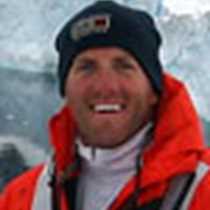Souththern tip of Spitsbergen, Svalbard
Hiking along the southern shores of Spitsbergen today, we found ourselves surrounded by fields of gently swaying Arctic Cottongrass and a fair number of Svalbard reindeer contentedly gorging themselves on the abundance of summer flora. It was one of many moments throughout this journey that have overwhelmed our senses and captivated our thoughts. Coincidentally, somewhere among all the polar bears, walruses, glaciers, and countless seabirds, a major ambassador to this region has been forgotten, or at least pushed to the back of our minds. And in many ways, this forgotten creature made our expedition possible, though we may not have realized it. Today, however, as we stepped on, over, and around the myriad of bones littering the shoreline, we were forcibly reminded of the original featured attraction in this part of the world...the bowhead whale.
When Svalbard was “officially” discovered in 1596 by the Dutch explorer Willem Barentsz, it was a land uncharted, and though Viking texts dating as far back as 1194 AD make mention of the islands, Barentsz is credited with it’s discovery. In fact, he nearly missed it, however, as he was pushed almost to 80º N by wind and fog while trying to discover the Northeast Passage. He made note of the islands in his log which Henry Hudson followed closely 11 years later in 1607. Hudson, however, took more notice of the numerous slow moving whales that he found feeding among the many fjords. This discovery of the Greenland whale, as it is sometimes called, on the eastern side of the Atlantic thusly mobilized a massive whaling industry in the area that eventually peaked in the early 18th century. Sadly, by that time the bowhead whale population had been depleted far beyond sustainable numbers. Logbooks from Dutch whaling companies show that in 1650 alone, there were as many as 250 ships taking four to five whales each. Add to those figures, the strong British whaling contingency, and it is easy to see how an estimated 22,000 whales could have been eradicated. Unfortunately, they have never recovered and are now very rarely seen east of Greenland.
Informed of such sobering knowledge, we all gained a little more appreciation for the unique, and yet fragile place we have traveled so far to visit. As we talked amongst ourselves and listened to the naturalists at recap, we realized how wonderful the Arctic is and how much more so it must have been. And we expressed our thanks and relief at the work being done by the Norwegian government, World Wildlife Fund, and many others to ensure that the Svalbard archipelago will remain a safe haven for its unique flora and fauna...and of course, for those of us who come to visit and appreciate it.




